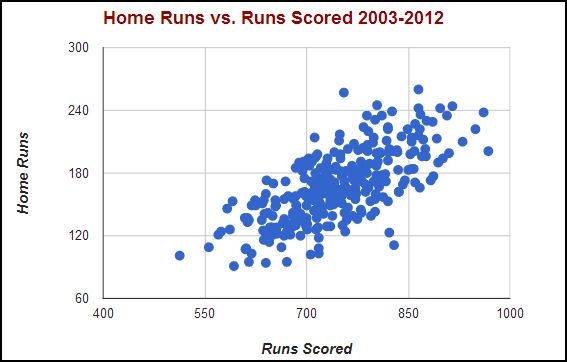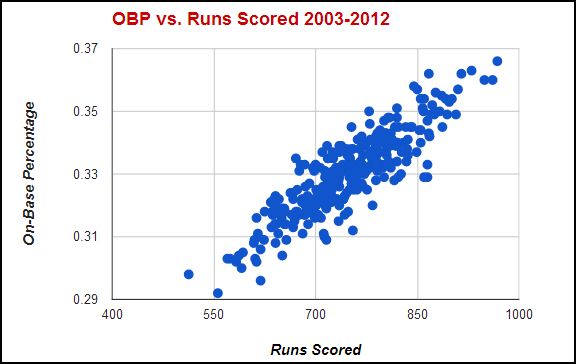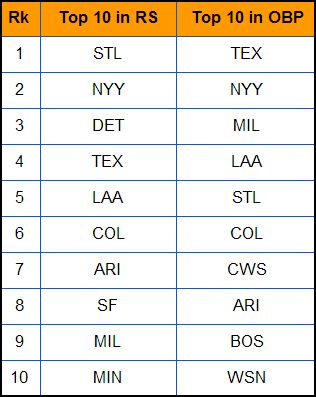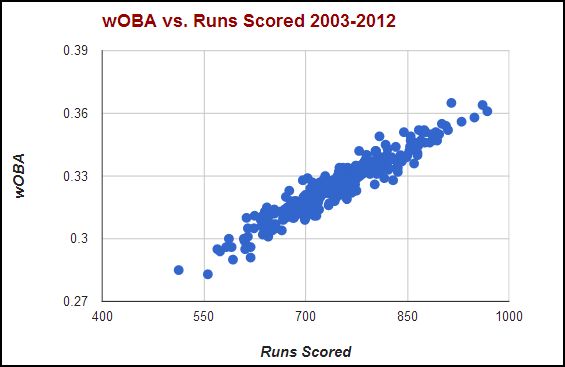There has long been a debate over the value of On-Base Percentage in baseball. The traditionalists say that On-Base Percentage has its place, but is not one of the main statistics front offices should be using when evaluating players. The fans that embrace advanced stats, however, argue that it is a very effective way of determining how well an offense performs.

Bill James
The popularity of the statistic among fans soared after Bill James and numerous others lobbied for it in the 1980s and 1990s. THere reasoning is this: a player making an out drastically reduces a team’s odds of scoring a run. They also argued that not making an out increases your team’s chances of scoring. In other words, they said getting on base is the most sure-fire way to score runs.
A large portion of the Met fanbase has been enraged by Sandy Alderson (a well-documented supporter of OBP) and his use of advanced statistics, especially when it comes to patience at the plate, walk rate, and on-base percentage. Through his comments in the media, he has lobbied numerous times for the stat, despite the displeasure of so many fans. That led me to conduct a little research on the effectiveness of the stat.
For my sample, I used every team’s stats over the last ten seasons (2003-2012). It’s a sample size of 300 different teams, which I felt would be enough to give an accurate measure of how OBP correlates to runs scored. Every little dot on the graph is one team, such as the 2007 Diamondbacks.
First, I wanted to look at something simple, like home runs. Teams with more power tend to score more runs, or so it is thought. Over the past ten years, the results were rather surprising.
There clearly is some type of correlation between home runs and runs scored, but it is much weaker than I thought it would be. Obviously there is a correlation because frankly, if you’re hitting 240 home runs in a season, you are going to score a ton of runs. However there are many cases in which teams have not followed this trend. So home runs do not directly correlate to runs scored, although they influence it.
Next, I wanted to see how this compares to On-Base Percentage, and whether it has a stronger effect on the number of runs a team scores.
Here, of course, you can see a very clear correlation. Teams that get on base more, teams who have batters that make outs less are more successful, and score more runs. However, you can obviously see that it is no perfect indicator of runs scored. Why is that so? Looking at last year’s rankings for both OBP and team runs scored, I saw that they were similar, but not in the same order.
The key thing to remember about On-Base Percentage is that it is a very rudimentary statistic. It has a very basic formula, and doesn’t take into account the values of the ways a player can get on base. Slugging percentage attempts to, but fails to put an accurate vale on each way someone can reach base. Is a double really worth twice as much to a team as a single? Is a walk worth three times less to a team than a triple? Over 100 years of baseball tells us that is not the case. That’s where wOBA, or weighted On-Base Average, comes in. It assigns a value to each way a hitter reaches base. How can they just choose those values? Doesn’t that make the stat arbitrary? The coefficients of walks, singles, doubles, etc. are based off the added probability of a run being scored. It’s essentially a bulked-up version of On-Base Percentage, and is even more effective at predicting runs scored.
I took the same date from earlier, the 2003 to 2012 seasons, and applied the same method I used for home runs and On-Base Percentage, only replacing it with wOBA.
Even a metric as well-developed as wOBA has its flaws, but it may be the most accurate in determining how many runs a team will score. There are still imperfections, but it’s about as close as we can get right now. Opponent defense, the offense’s ability to steal bases, managerial moves, and more all tweak the results a bit. This is no super-stat. There are none. But they are very effective.
There are always going to be exceptions to the rule, especially in a sport as complicated as baseball, but On-Base Percentage and more complex versions of it (wOBA) clearly correlate to runs scored, and are not by any means, meaningless statistics.



















